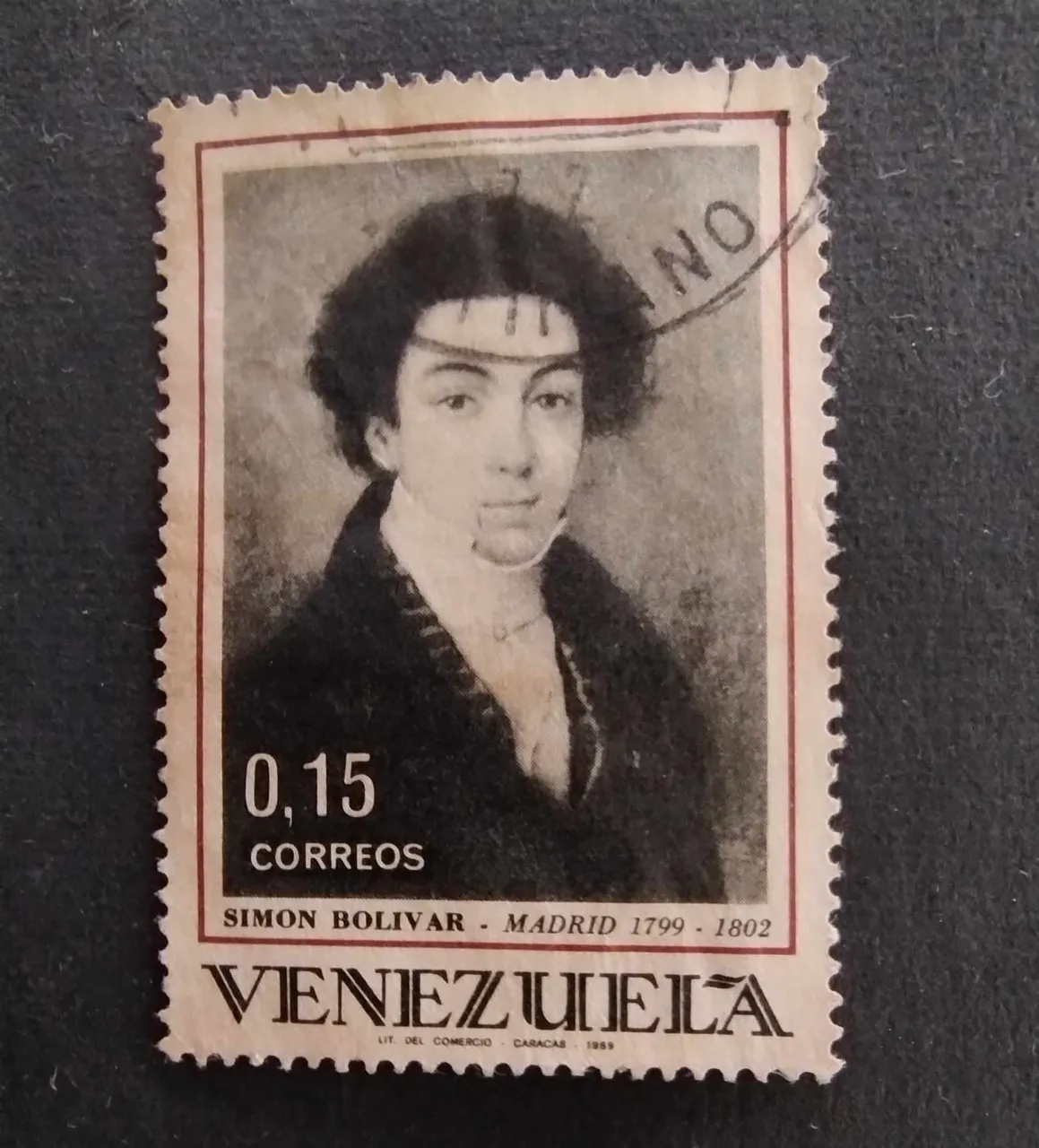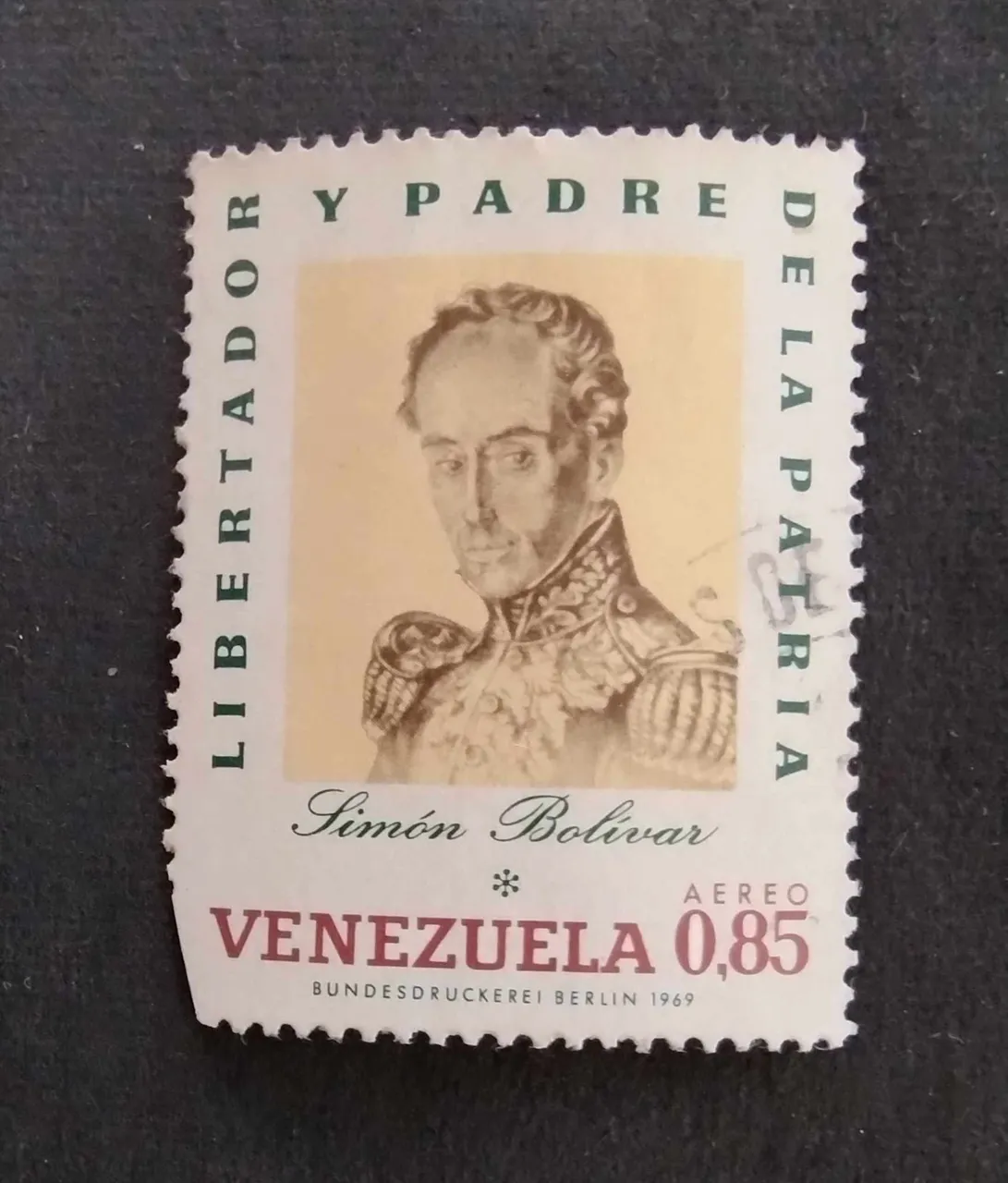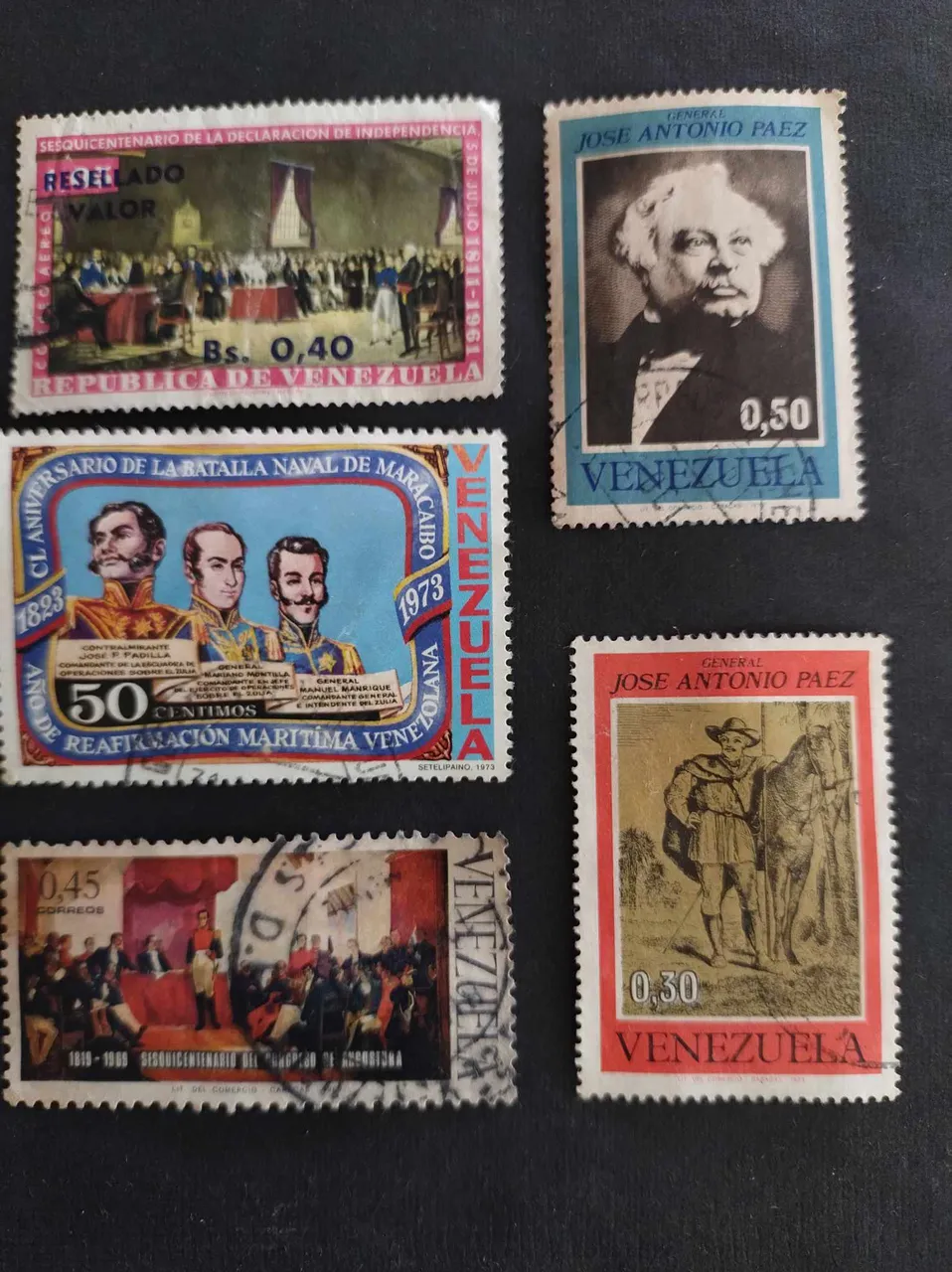Simón Bolívar, libertador, es el personaje elegido para esta segunda entrega de mi colección.
En ella podrán apreciar la estampa retratada del prócer de la patria venezolana y las demás repúblicas hermanas.
No por haberlo leído, sino porque cuando visite la casa natal en Caracas y vi su cama, sé que era hombre de baja estatura, pero con voluntad de hierro, no en vano recorrió el continente a caballo, Andes arriba y abajo.
Como decía aquel humorista; Voluntad y corazón. En los retratos de la época, los pintores nos muestran un hombre blanco, en consonancia con sus apellidos y origen en el norte de la península Ibérica, que por mucha leche que mamara de su nodriza negra, Hipólita, jamás se volvió mulato, ni zambo.

[El joven Simón con 19 años o menos]

[Su semblante cuando tenía 33 años, según dice al pie]

[Posiblemente, su retrato más conocido con 42 años]

[Con 46 años y muchas leguas cabalgadas y mares navegados]

[En este semblante luce mayor y cansado, pero no tiene fecha]
Las letras pequeñas en la parte inferior, nos indican que el sello se imprimió en 1969 en Alemania, donde Venezuela ordenaba hacer estampillas y billetes, aunque también se imprimían en una litografía de Caracas.
En el álbum tengo algunos otros sellos con las mismas imágenes, pero de diferente valor facial. Que solo interesan a quienes quieren tener las series completas, por ejemplo sellos con la misma imagen, pero de 10, 20, 25, 50 céntimos y 1, 1,25, 2 Bolívares. En aquella época, de seguro ahora tienen valores muy diferentes.

[Sellos relacionados con la gesta libertadora y otros actores]
En el primero, a la izquierda, se muestra un famoso cuadro de la declaración de la independencia con motivo de los 170 años y en la parte superior se aprecia que el valor original era de Bs. 1, 05. Posiblemente, cubría una tarifa muy usada y cuando se dejaron de usar, la administración de correos los resello con un valor distinto, que les resultara necesario y darles uso con el nuevo valor. Por lo general el cambio es hacia arriba, pero en 1981 disfrutábamos de una inflación muy baja y sucedió lo contrario.
Si recuerdan la publicación anterior, aparece un sello de Uruguay de 5 milésimos, resellado en 20 centésimos. El uso de la palabra centésimo, en lugar de céntimo, se debe a una fuerte influencia inglesa en el sureño país en la primera mitad del siglo XX. Otro ejemplo de tal influencia es que en los autobuses de Montevideo en 1975 lucían letreros con la prohibición de salivar, en lugar de escupir. La compañía propietaria era inglesa y en su idioma no tienen, al parecer, la sutil diferencia del castellano, entre producir saliva (salivar) y expulsarla de la boca (escupir).
[Ya quiero ver el galimatías que arma el traductor Google]
Un detalle importante en filatelia es que el sello tenga completos todos los dientes o su valor se verá muy menguado.
Mañana apreciaremos otro motivo de carácter artístico en los sellos, como son los cuadros y los pintores.
Gracias por su lectura y hasta mañana.
English
Simón Bolívar, liberator, is the character chosen for this second installment of my collection.
In it you will be able to appreciate the image portrayed of the hero of the Venezuelan homeland and the other sister republics.
Not because I read it, but because when I visited his birthplace in Caracas and saw his bed, I know that he was a short man, but with an iron will, it was not in vain that he traveled the continent on horseback, up the Andes and below.
As that comedian said; Will and heart. In the portraits of the time, the painters show us a white man, in line with his surname and origin in the north of the Iberian Peninsula, who, no matter how much milk he sucked from his black nurse, Hipólita, never turned mulatto, nor zambo.

[Young Simón, 19 years old or younger]

[His appearance when he was 33 years old, as it says at the bottom]

[Possibly the best-known portrait of him at 42 years old]

[At 46 years old and many leagues ridden and seas navigated]

[In this appearance he looks older and tired, but there is no date]
The small letters at the bottom indicate that the stamp was printed in 1969 in Germany, where Venezuela ordered stamps and banknotes to be made, although they were also printed on a lithography from Caracas.
In the album I have some other stamps with the same images, but different face value. They are only of interest to those who want to have the complete series, for example stamps with the same image, but of 10, 20, 25, 50 cents and 1, 1.25, 2 Bolívares. At that time, they surely have very different values now.

[Stamps related to the liberation feat and other actors]
In the first, on the left, a famous painting of the declaration of independence is shown on the occasion of the 170th anniversary and in the upper part it can be seen that the original value was Bs. 1.05. Possibly, it covered a very used and when they were no longer used, the postal administration re-stamped them with a different value, which they found necessary and used them with the new value. Usually the change is upward, but in 1981 we enjoyed very low inflation and the opposite happened.
If you remember the previous publication, there is a stamp from Uruguay of 5 thousandths, re-stamped in 20 hundredths. The use of the word hundredth, instead of centime, is due to a strong English influence in the southern country in the first half of the 20th century. Another example of such influence is that buses in Montevideo in 1975 displayed signs prohibiting salivating, instead of spitting. The company that owned it was English and in their language they apparently do not have the subtle difference in Spanish between producing saliva (salivating) and expelling it from the mouth (spitting).
[I already want to see the gibberish that Google Translate creates]
An important detail in philately is that the stamp has all the teeth complete or its value will be greatly reduced.
Tomorrow we will appreciate another artistic motif on the stamps, such as paintings and painters.
Thank you for reading and see you tomorrow.